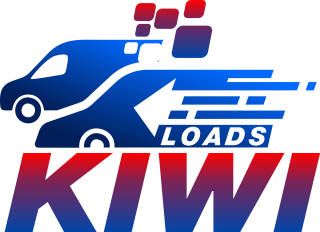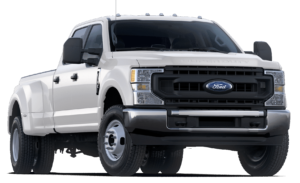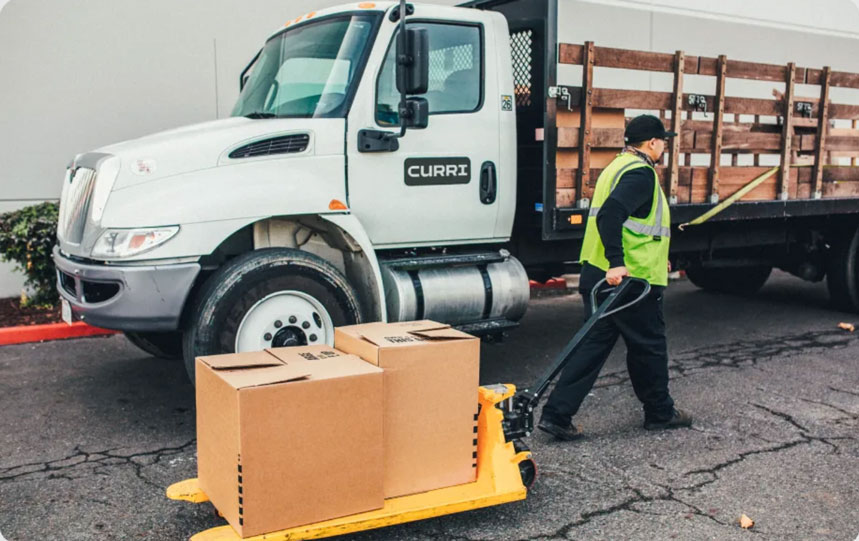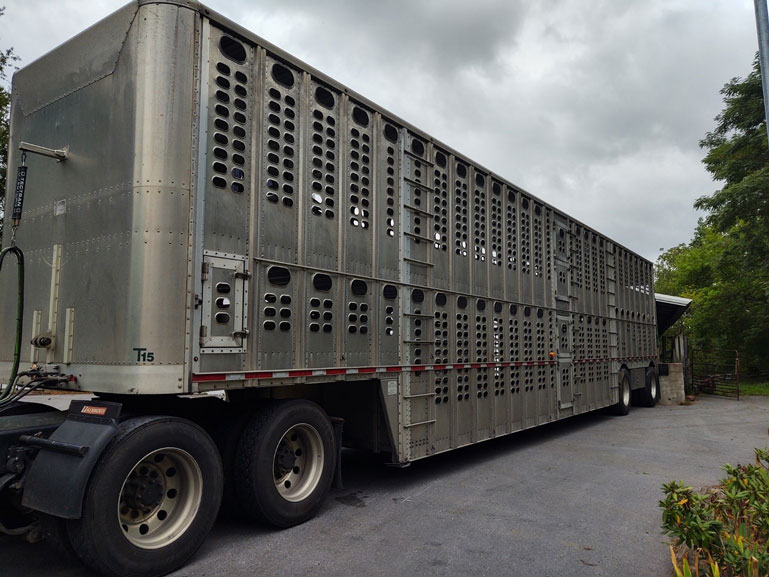Table of Contents
Want to start a tipper truck business? Oh, great. You’re taking a bold step of expanding your revenue and generating consistent cash flow. Starting a tipper truck business is not just about having a business idea and then pumping your precious capital into financing the idea.
You need a workable business plan. Yes, starting a new enterprise is all about taking risks, but you want to ensure you’re taking a calculated risk and that your chances of success significantly outweigh the possibilities of failure. Thumbs up for choosing the tipper truck business. Believe it, the trucking industry keeps producing more and more millionaires every year.
It doesn’t matter whether you’re just launching into the business world or you’re someone looking for more investment opportunities. This article walks you through every step you need to take in order to write a comprehensive, practicable, and workable business plan.
Before you delve into the details in full, he’s a preview of the steps you need to take:
Tipper Truck Business Plan
1. Research Market Demand and Competition.
2. Define Target Customer Segments.
3. Determine Optimal Pricing Strategy.
4. Identify Potential Revenue Streams.
5. Outline Operational Logistics and Fleet Management.
6. Develop Marketing and Advertising Strategies.
7. Establish Financial Projections and Budgeting.
8. Create a Risk Management Plan.
9. Set Milestones and Goals for Growth.
10. Incorporate Sustainability Initiatives.
11. Obtain Necessary Permits and Licenses.
Now it’s time for the details. Ready? You bet!
Step 1: Research Market Demand and Competition
To write a comprehensive tipper truck business plan, research market demand and competition. You have to make the first things first. Understand the demand and competition in the truck industry so that you can decide whether the business resonates with you. Not only that, but market also demands and competition allow you to identify the strategy you’re going to adopt so as to break into the market with little to no friction.
Think about the frequency of getting offers and how your competitors bid for those jobs. One cool thing about the tipper truck business plan is that it allows you to pay attention to factors that determine your success in the trucking world.
That’s clear, right? Great!
Step 2: Define Target Customer Segments
To write a detailed tipper truck business plan, define target customer segments. First identify the specific industries and businesses that regularly require transportation and dumping services. Consider construction companies, mining operations, landscaping firms, and municipal infrastructure projects, among others.
Remember to prioritize the geographic location and scale of these potential clients to tailor your services effectively. Know your potential customers’ unique needs, such as load capacity, scheduling flexibility, and site accessibility, to provide tailored solutions. Additionally, analyze the purchasing behavior and preferences so that you refine your marketing efforts and strengthen customer relationships.
Step 3: Determine Optimal Pricing Strategy
To develop a tipper truck business plan, determine optimal pricing strategy. You know where to start? Don’t worry if you don’t. Conduct a thorough market research to understand pricing trends, your competitor pricing strategies, and customer preferences. Running a business isn’t only about profit. Look at factors such as operating costs, including fuel, maintenance, and insurance, as well as the value you provide to customers through timely and reliable service.
Utilize pricing models such as cost-plus pricing, value-based pricing, or competitive pricing to set your rates effectively. When you start the business, you must continuously monitor market dynamics and adjust your pricing strategy accordingly to ensure you keep making profit and maintain customer satisfaction. Hurrah! Your tipper truck business plan is gradually taking shape. You’re making progress.
Step 4: Identify Potential Revenue Streams
To draft a tipper truck business plan, identify potential revenue streams. Take a peep into the future and pinpoint various avenues through which your business can generate income. Note all the options that cross your mind. With a tipper truck, the potential revenue streams include offering transportation services for construction materials such as gravel, sand, and concrete to construction companies and contractors.
What about providing waste management services, hauling away debris and waste from construction sites or other locations? The possibilities are just numerous.
Sometimes you just feel like resting while someone does the work. That’s the best time to offer rental services for your tipper trucks to other individuals in need of temporary transportation solutions.
Dare to diversify your revenue streams so that you confidently enhance your earning potential and strengthen your business’s resilience in fluctuating market conditions.
Feeling like you take in too much here? The feeling is normal. What you’re learning is valuable.
Step 5: Outline Operational Logistics and Fleet Management
To form a tipper truck business plan, outline operational logistics and fleet management. Management is key to the success of any business. You have to plan ahead for it. Detail how you intend to manage scheduling, maintenance, and routes in order to optimize productivity and minimize downtime.
Go even more deeper by planning for tracking fuel consumption, vehicle utilization, and driver performance. And don’t forget the goal: to enhance efficiency and control costs. Additionally, highlight any technology or software solutions you plan to implement to streamline fleet management processes and improve decision-making.
Step 6: Develop Marketing and Advertising Strategies
To write a tipper truck business plan, develop marketing and advertising strategy. Identify your key market segments—whether it’s construction companies, landscaping businesses, or municipal authorities—and tailor your approach accordingly. List the unique value proposition your tipper truck offers, such as reliability, efficiency, or versatility.
Utilize a mix of online and offline channels to reach potential clients, including social media, industry publications, trade shows, and direct mail campaigns. Emphasize the benefits of working with your company, such as prompt service, competitive pricing, or customizable solutions. One thing with marketing is that it’s not a once and for all action. You need to keep doing it until you have a robust client base.
>>>GET SMARTER: How to Start a Tipper Truck Business
Step 7: Establish Financial Projections and Budgeting
To create a tipper truck business plan, establish financial projections and budgeting. Factor in market demand and competitive pricing analysis. Then, project your operating costs, including vehicle maintenance, fuel expenses, insurance, and personnel salaries—including yourself.
Consider potential fluctuations in fuel prices and regulatory changes that can impact your budget.
Implement a contingency plan for unforeseen expenses to mitigate risk effectively. In the last session you learn the importance of marketing. So include the cost of promoting your business in your budgeting.
Step 8: Create a Risk Management Plan
To develop a detailed tipper truck business plan, create a risk management plan. You want to anticipate potential challenges and implement proactive measures to mitigate them. Spot the various risks associated with operating a tipper truck business, including equipment breakdowns, accidents, regulatory compliance issues, and economic fluctuations.
Assess the likelihood and potential impact of each risk, prioritizing those with the highest probability and severity. Then, outline specific strategies for managing and minimizing these risks, such as regular equipment maintenance, comprehensive insurance coverage, safety training for drivers, and diversification of clientele to reduce dependency on any single market segment.
To have a growing business, you must make provision for business continuity in case of an unpleasant occurrence that can impact your venture negatively. Yes, you don’t pray for such events, but you must plan ahead for them.
Step 9: Set Milestones and Goals for Growth
To write a tipper truck business plan, set milestones and long-term goals for growth. Ask yourself what specific milestones you require for expanding your fleet, increasing market share, or entering new geographical areas? List your answer.
Break down your objectives into measurable targets, such as acquiring a certain number of new clients within a specified timeframe or achieving a set revenue milestone. Incorporate key performance indicators (KPIs) to track progress and adjust strategies, as necessary.
Step 10: Incorporate Sustainability Initiatives
To draft a tipper truck business plan, incorporate sustainability initiatives. How do you plan to minimize environmental impact while maximizing efficiency and profitability? Start by evaluating your fleet’s fuel consumption and exploring options for transitioning to alternative fuels or implementing fuel-saving technologies.
Adopt practices such as vehicle maintenance to ensure optimal performance and reduce emissions. Explore opportunities for recycling materials you use in your operations and consider sourcing eco-friendly materials when possible. Emphasize your commitment to sustainability in your marketing materials and communications with clients, showcasing how your business commits itself to environmental stewardship while delivering top-notch service.
Step 11: Obtain Necessary Permits and Licenses
To come up with a comprehensive tipper truck business plan, obtain necessary permits and licenses. Research the specific permits and licenses you need in your area for operating a commercial trucking business, including transportation permits, vehicle registration, and special endorsements for hazardous materials or oversized loads, if applicable. Actively engage with local regulatory bodies and transportation authorities to ensure you have a clear understanding of the requirements and application processes.
Congratulations! You explore the items you must include in your tipper truck business plan. Remember that you’re not alone in this journey. If anything is still not clear, feel free to send us an email and indicate what assistance you require. You’re doing great! Here’s a recap of everything you learn so far.
Recap
In crafting a comprehensive tipper truck business plan, you need to address several key components meticulously. Begin by researching market demand and analyzing the competitive landscape to identify opportunities and challenges.
Define your target customer segments to tailor your services effectively. Determine an optimal pricing strategy and identify potential revenue streams to ensure profitability.
Outline operational logistics and fleet management to streamline your business operations. Develop robust marketing and advertising strategies to effectively reach your target audience.
Establish detailed financial projections and budgeting to guide your financial management. Create a risk management plan to mitigate potential pitfalls.
Set clear milestones and goals for growth to track progress effectively. Incorporate sustainability initiatives to align with evolving environmental standards and customer expectations.
Lastly, ensure legal compliance by obtaining necessary permits and licenses.



















